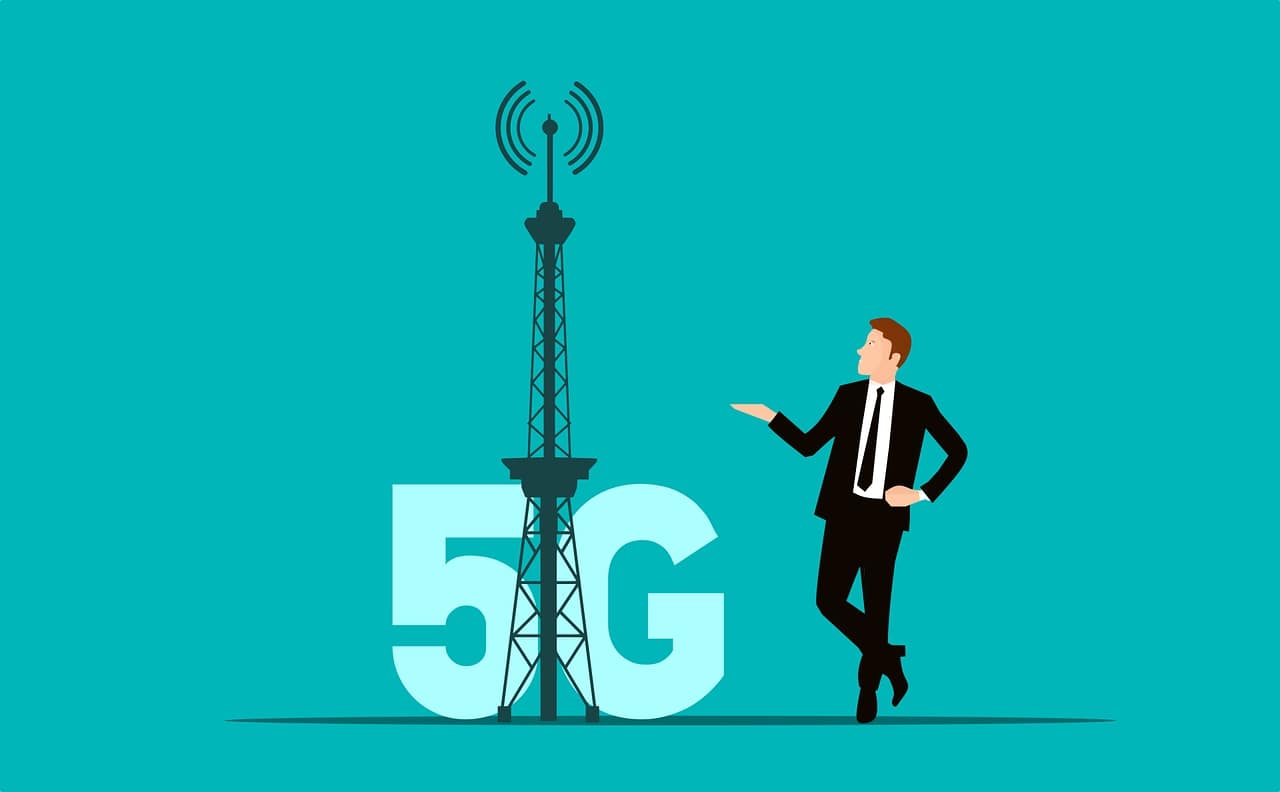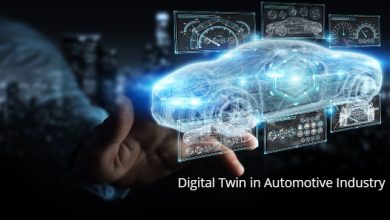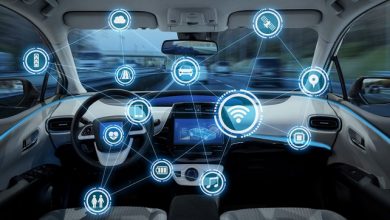What 5G connectivity means for the Automotive Industry

Introduction
We are witnessing a distinct shift in the Automotive industry from linear value chains with OEMs at the end of the assembly line to a networked ecosystem with multiple players collaborating and interacting with each other as well as the end consumer. As a testament to that trend, this article on the impact of 5G in Automotive industry is an outcome of collaboration between Teradata industry leads from two industries – Automotive and Telecommunications.
As the 5G network is getting rolled out in India, there are huge expectations from the industry, especially the Automotive industry. The automotive industry and the mobility ecosystem together can potentially gain quantum benefits by effectively using the 5G connectivity technology.
What is 5G?
As 5G is being rolled out in India, for consumers such as you and me, it provides significantly faster speeds and access to more responsive applications for ‘enhanced Broadband Experience’ when we compare with existing 4G experience. But that is not all, 5G is not ‘just a fat and faster data pipe’, instead, it’s a purpose-built technology that provides ‘Ultra Reliable & Low Latency’ coupled with ‘Massive Machine Type Connections’.
Because of these inherent capabilities, 5G is rightly said to facilitate and accelerate next industrial revolution of Industry 4.0. The inherent characteristics of the 5G connectivity also makes hyper connected mobility solutions a real possibility. Automotive and Transportation sector would be a beneficiary of this Telecommunication driven technology advancement along-with various other sectors such as health, smart-city, manufacturing et-al.

5G Impact on Mobility ecosystem
Today, we have millions of vehicles which connect to cellular networks for navigation, connected infotainment, emergency services etc. But the new cellular network, like 5G, will enable additional applications due to increased throughput, higher reliability, and low latency.
The use cases can be broadly classified into three categories in the connected vehicle space:
- Safety related use cases
- Infotainment related use cases
- Efficiency related use cases
The 5G network can commercially enable what we call C-V2X connectivity, which stands for Cellular Vehicle-to-Everything connectivity. Here Everything can be another vehicle, pedestrian, road and traffic infrastructure, network etc.
Safety related use cases: India holds the infamous distinction of having the highest road fatalities globally. Hence, road safety applications of 5G would be of paramount importance in Indian context. Some of the relevant use cases are mentioned below.
- Alerts: Turn assist in non-line-of-sight (NLOS) scenarios, emergency braking warning, collision avoidance/crash warning etc.
- Speed control/recommendations: Speed adjustments due to road closure / accidents / congestions ahead to avoid pile ups or collisions. Traffic authorities in Australia are exploring using 5G to maintain safety and yet reduce inter-vehicle distance in tunnels to avoid congestion and crashes
- Intersection Management: Improved coordination of intersections making them safer
Infotainment related use cases: This is an area which is going to exponentially grow due to the 5G bandwidth capability. This is also a potential area for data monetization for the mobility ecosystem players. Some of the use cases are mentioned below.
- Streaming media and Gaming: Rich HD media can be streamed directly to the infotainment system over the 5G network. High-end online gaming could also be supported by the network.
- OTA updates: It will become easier for vehicle manufacturers now to send large software updates over the cellular network, for various reasons – bug fixing, adding functionalities, infotainment etc.
- Mapping: 5G will enable more accurate real time map updates in 3D as well. This will also enable providers to monetise by allowing location based services in the vehicle.
Efficiency related use cases: This is an area which is primarily useful for fleet and commercial vehicles. The characteristics of the 5G network can be intelligently used to deliver value to the commercial and fleet customers. Some use cases are mentioned below.
- Platooning: Platooning is a concept of commercial vehicles (trucks) driving in tandem at a coordinated speed, maintaining a specific distance between each, thereby reducing fuel consumption hence cost as well as CO2 emissions. This is enabled by real-time high-speed communication between the trucks.
- Route optimization: Real time traffic and map data can enable vehicles to optimize routes for faster trip hence lower cost per km travelled.
5G Impact on Automotive Manufacturing
Another area which is often neglected is the impact of 5G private networks in manufacturing. Rolling out of 5G network in India will be a huge accelerator to the adoption of Industry 4.0 in manufacturing sector like Automotive. With Operators offering private 5G networks for enterprises, the high volume, low latency, high reliability of 5G technology will perfectly suit the connectivity needs of Industry 4.0 use cases. This will make many potential use cases like streaming video data analytics possible for visual defect identification or plant safety.
A very practical use case is flexibility of placing robots in the factory floor, as you don’t need to worry about the wired network cables, only power source will be needed (Audi and Ericsson have successfully completed a pilot on this). This means that the production setup can easily be changed, and units moved around on a day-to-day basis to maximize efficiency. With a private 5G network, factories can roll out AI (Artificial Intelligence) and machine learning quickly, without needing to disrupt the production line and supply chain through changes to infrastructure. That means manufacturers can meet customer demand of more customized products. This is vital, as most studies point to an increasing demand for customized vehicles on B2C buying channels.
Conclusion
As we see more and more technology disrupting the automotive industry, it presents a major opportunity for the global tech giants to disrupt yet another industry. They have already made inroads in the form of infotainment platforms, and there are major ongoing investments from these players on other aspects of the automotive ecosystem. The smaller tech startups are also well suited to take advantage of the massive amount of data which is getting generated from the automotive ecosystem. This has made it imperative for the traditional Automotive OEMs to move to become technology-driven organisations at a faster pace.
There is also going to be a huge investment required in network performance to enhance the service quality to serve the automotive ecosystem. This may need the forming of an ecosystem to unlock value pool. We might also see an increase in public–private partnerships to address some of these issues by co-investing with both telecom operators and automakers to build the necessary network infrastructure.
Globally, a substantial number of Automotive and Telecom companies have come together to form a consortium called 5GAA to bridge the automotive and telecommunications industries for defining the next generation of connected mobility, automated vehicle, and intelligent transport solutions based on C-V2X. We need a similar initiative in India to define India specific solutions.
The telecom industry, automotive industry and the mobility ecosystem at large have grand expectations from the rollout of 5G in India. It will need a lot of stakeholders to come together to make it happen.
Disclaimer: The views, thoughts, and opinions expressed in the article are done solely by the authors in their personal capacity, and do not necessarily represent those of the authors’ employer, organization, committee or other group or individual.
Authors:

Udiptya Pal
Sr. Industry Expert – Automotive & Manufacturing for APJ
Teradata
Udiptya is based out of Mumbai, India and he brings more than two decades of diverse experience in the areas of consulting, Analytics, digital transformation, process re-engineering, strategy, business development & sales. He has spent significant time with leading automotive and engineering organisations in various leadership roles before joining Teradata.

Alok Singh
Sr. Industry Expert – Telecommunications for APJ
Teradata
Alok is based out of Sydney, Australia and has 20 plus years of international experience in Telecom & software industry with focus on introducing new technologies and solutions across APAC. In recent years he introduced IoT and 5G offerings for telco and enterprise clients. B.Tech & MBA with Business & Data Analytics experience and an active member of IoT Australia Alliance.
Published in Telematics Wire





